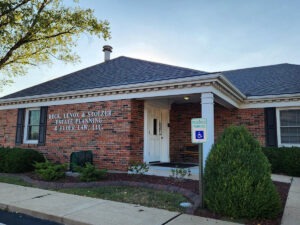As the U.S. population ages, the demand for long-term care services grows. Recent studies underpin this, reporting that more than half of American seniors will need long-term care during their lifetimes. This growing need underscores the importance of planning ahead to ensure access to quality care, while managing the financial burdens associated with extended care.
The Growing Need for Long-Term Care
Long-term care encompasses a range of services, from assistance with daily activities to skilled nursing care for chronic conditions. Seniors often require these services due to age-related health issues such as mobility limitations, dementia, or prolonged recovery from illness or surgery.
The U.S. Census Bureau projects that by 2030, 20% of the population will be 65 or older, further increasing the demand for long-term care facilities, home health services and assisted living options. This demographic shift presents significant challenges for families, healthcare providers and policymakers.
Financial Implications of Long-Term Care
Long-term care is costly. Many seniors underestimate the expenses involved. A report by the U.S. Department of Health and Human Services reveals that the average cost of a private room in a nursing home exceeds $100,000 per year. In contrast, assisted living facilities can cost over $50,000 annually. Home care services, though often preferred, also come with significant financial demands.
While Medicare provides limited coverage for certain long-term care needs, it does not cover extended stays in nursing homes or ongoing personal care services. Medicaid may be an option. However, eligibility requirements can be restrictive, often requiring individuals to deplete their assets to qualify.
Planning Ahead for Long-Term Care
Proactive planning is critical to preparing for long-term care needs. To offset future expenses, seniors and their families should explore financial planning tools, such as long-term care insurance. Policies purchased earlier in life are typically more affordable and provide broader coverage.
Consider Medicaid Planning
For those who anticipate needing Medicaid assistance, consulting an elder law attorney can help navigate eligibility requirements and protect assets. Strategies such as establishing trusts or transferring assets well in advance of care needs can ensure compliance with Medicaid’s look-back period, while preserving financial security. This is a growing part of Beck, Lenox & Stolzer’s law practice. We applaud those with foresight to plan ahead.
Explore Home Care Options
Home care services often provide a more comfortable and cost-effective alternative to institutional care. Family caregivers, adult daycare programs and in-home health aides can support seniors while allowing them to remain in familiar surroundings. Planning for home modifications, such as wheelchair ramps or stair lifts, can further facilitate aging in place.
Involve Family in Decision-Making
Discussing long-term care plans with family members ensures alignment and reduces future stress. Open conversations about preferences, financial limitations and care responsibilities allow families to create a cohesive strategy that meets everyone’s needs.
Addressing Systemic Challenges
The increasing demand for long-term care highlights broader systemic issues, including workforce shortages, inadequate funding and disparities in access to care. Policymakers and healthcare organizations must address these challenges to ensure that seniors receive quality care without overburdening families.
Investments in caregiver training, expansion of Medicaid programs and incentives for long-term care insurance providers are potential solutions to address these growing concerns.
Key Takeaways
- High Demand for Care: Over half of American seniors will require long-term care, driven by an aging population and chronic health issues.
- Significant Costs: Nursing homes, assisted living and home care services are expensive, often exceeding $100,000 annually for comprehensive care.
- Medicare and Medicaid Limitations: Medicare offers limited coverage, while Medicaid requires careful planning to navigate eligibility rules.
- Proactive Planning is Essential: Long-term care insurance, Medicaid planning and early discussions with family are crucial to preparing for future needs.
- Policy Changes Needed: Systemic reforms, such as caregiver training and expanded funding, are vital to meet the rising demand for care.
If you can plan ahead, do. Not sure you need to do that? Take advantage of our free phone consultation with one of our elder law attorneys and discuss the possible future needs. If you happen to already need long-term care, we are able to offer solutions for those needs as well.
Reference: CNN (Sep. 17, 2023) “More than half of older Americans will need long-term term care. Many can’t afford the rising costs“










